Looking to expand your flock of backyard chickens? Black chicken breeds might be a good choice for you.
While most people purchase new chickens based on other qualifications, such as their ability to produce tasty, ample quantities of meat or bountiful baskets of eggs, there’s another factor you might want to take into consideration when you are shopping for chicks – their color.
While red chickens, white chickens, and even gray chickens are common in most backyard flocks, there’s another color you need to consider when you are expanding.
Black chickens are some of the most stylish birds you can keep, and they offer a serious fashion statement to the rest of your flock.
If you’re looking for a new standout in your chicken coop, consider one of these ten awesome types of black chickens.
[toc]
10 Awesome Types of Black Chickens
Here are 10 common breeds of black chickens:
1. Ayam Cemani
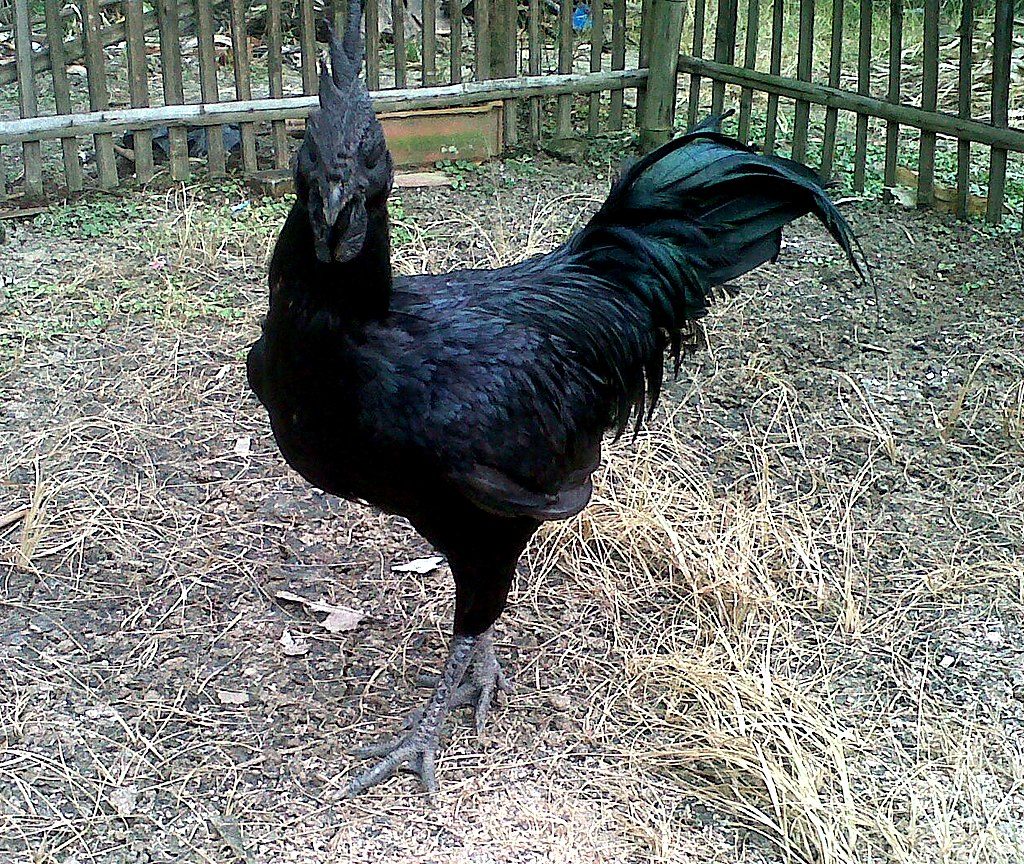
- Purpose: Dual-purpose (meat and eggs)
- Average Weight: 4-6 lbs
- Egg Production: 80 per year
The Ayam Cemani is an extremely unique and rare black chicken that originally came Indonesia. Raise one for meat, and you’ll notice that this interesting chicken actually has a black heart. One of the few truly melanistic chickens in the world, this bird is highly respected in Indonesia, believed to have magical powers that allow it to communicate with those in the afterlife.
As a result, it is naturally believed to be a good luck charm. It is commonly raised in Sumatra, Java, and Madura Island in Indonesia. Many cultures use this bird in ceremonies before big events.
Everything about this chicken, from its skin, feathers, and its internal organs, is black. Even the blood of the Ayam Cemani is a darker red than normal. This dark color is caused by fibromelanosis, a genetic condition that affects every aspect of the bird. Only introduced to Europe in 1998, this bird is gaining popularity in the United States, mostly for its unique appearance.
Unfortunately, as the bird grows in popularity, many breeders deliberately try to pass off hybrid chickens as purebred Ayam Cemani – do your research before you buy! This breed of chicken can be expensive to purchase because of this reason. A mating pair can cost up to $5000.
You can raise the Ayam Cemani for meat or eggs – it is a mediocre breed for both purposes. The eggs are cream-colored and average size. This bird has a unique (albeit somewhat sporadic) pattern of laying in which it will lay twenty-five or so eggs, stop for a period, and then start again. As a result, Ayam Cemani hens only lay about 80 eggs per year. Weighing about four to six pounds and possessing long, featherless legs with sharp spurs, it’s also an average meat producer.
2. Orpington

- Purpose: Dual-purpose
- Average Weight: 10 lbs
- Egg Production: 150-300 per year
The Orpington chicken is one of the most popular breeds of chicken for backyard flocks. This bird originated in England in the nineteenth century and is a mostly black breed with a thick, soft, and fluffy layer of feathers that allows it to adapt easily to cold weather.
The original Orpingtons were white, but now they can be found in black and buff colors. They are gentle and docile, making them great pets, and are also quite hardy. They are interesting in that they are one of the most community-oriented breeds of chickens. The roosters will find food their hens and will also round everyone up at night to make sure everybody has made it into the coop.
While it does not have an all-black body (the skin of this bird is white), it does have gorgeous black plumage that makes it a standout in the barnyard. It can be raised for both eggs and meat but is usually raised for egg production. Orpingtons lay anywhere between 150 and 300 large brown eggs each year, many of which are tinted pink. They are also good foragers, meaning you can feed these chickens less than other breeds of chickens – they will do a good job at finding their own food.
3. Australorp
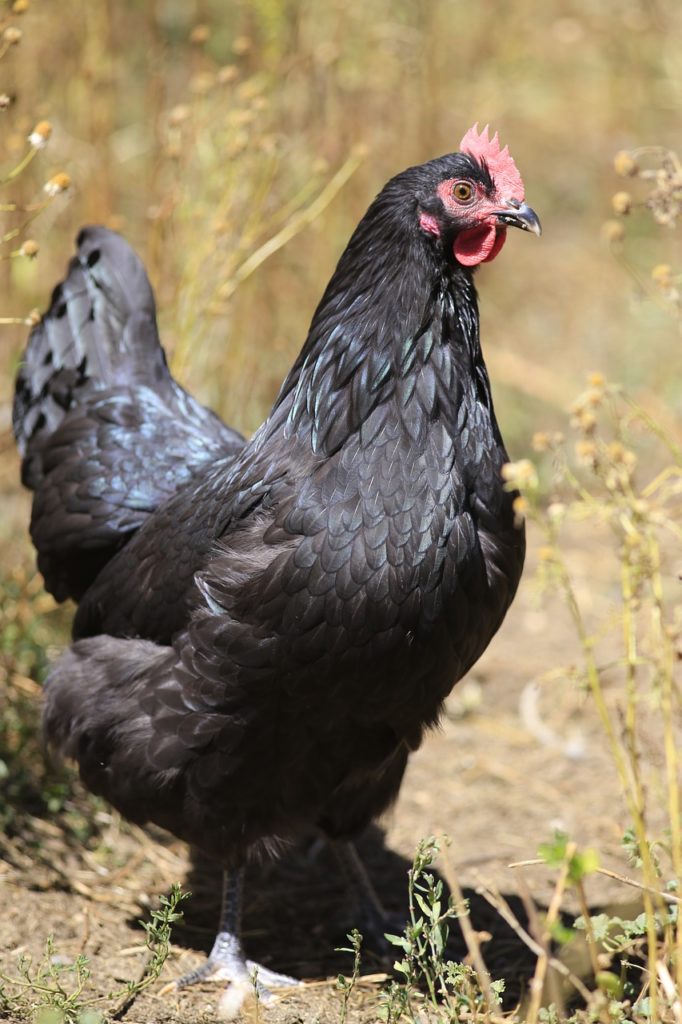
- Purpose: Dual-purpose
- Average Weight: 5-7 lbs
- Egg Production: 250 per year
Australorps come in many colors, but the black shade is one of the most popular. These gorgeous birds are easy to find and are actually the Australian hybrid of the Orpington breed. Black Australorps are incredibly sweet and docile, but can also be quite shy. You can find Black Australoprs whose feathers have shades of green, too.
If you’re looking to raise a black chicken as a pet, you can’t go wrong with the Black Australorp. Not only are these chickens gorgeous to look at, but they are exceptionally loyal. You can train a Black Australorp to eat out of your hand.
In addition, Australorps are good layers, producing ample amounts of extra-large brown eggs each week. It is an Australorp that holds the record for the number of eggs laid in a year! They also can be raised for meat, producing high-quality broilers.
4. Minorca
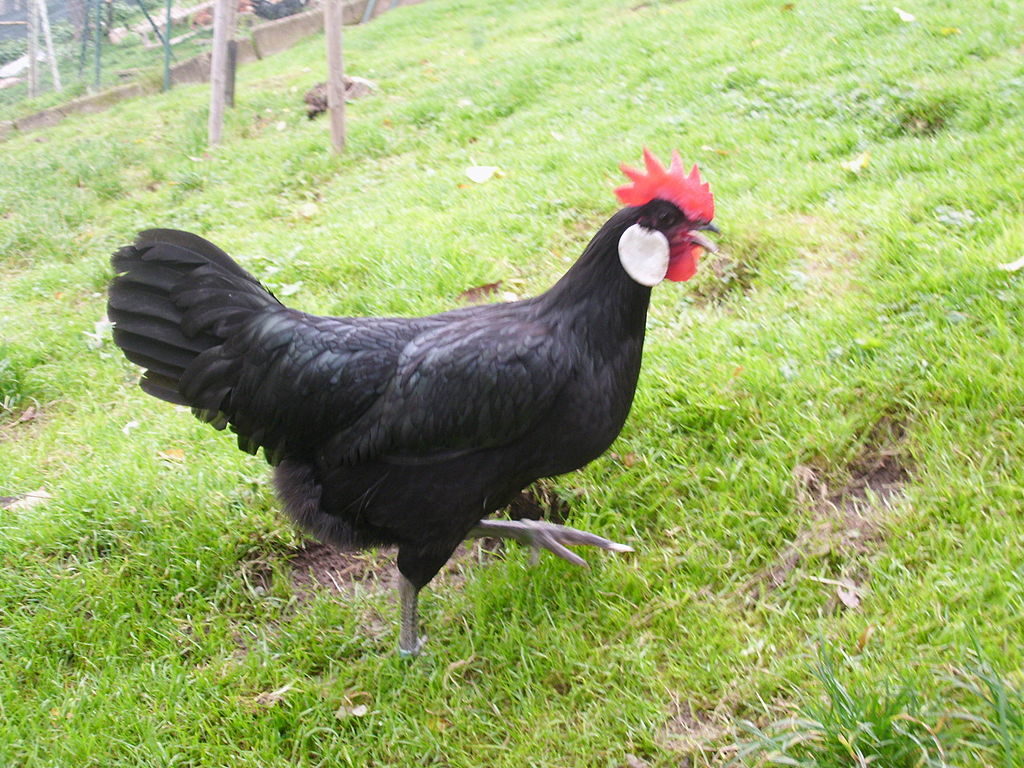
- Purpose: Ornamental/egg production
- Average Weight: 7-9 lbs
- Egg Production: 120-200 per year
Minorca chickens are native to Spain and are typically raised as ornamental or show breeds. Known synonymously as Red Faced Black Chicken, these gorgeous birds have pale red faces. Interestingly, the comb of each hen also falls forward in a unique display. These birds are warm-weather birds, meaning you should avoid raising them if you live in a cold area.
There are other types of Minorca chickens, but the most popular is the Black Minorca. A red-faced chicken with glossy black plumage, this chicken is the largest of the Mediterranean breed. It is also exceptionally friendly.
Minorcas are large birds, with roosters weighing up to seven pounds. Unfortunately, despite their large size, they aren’t great for eating, producing meat that lacks flavor and proper texture. However, they are great egg producers, laying ample amounts of large and extra-large white eggs. You can expect to get about 120 large white eggs per year, and because this bird rarely goes broody, you won’t usually see dips in egg production at certain times of the year.
These chickens start laying at around 26 weeks of age and although 120 eggs is the standard for this breed, there are some strains that produce more, laying up to 230 per year. These graceful, energetic chickens are an excellent choice if you are looking for a bird that is decorative as well as a decent layer.
5. Silkies
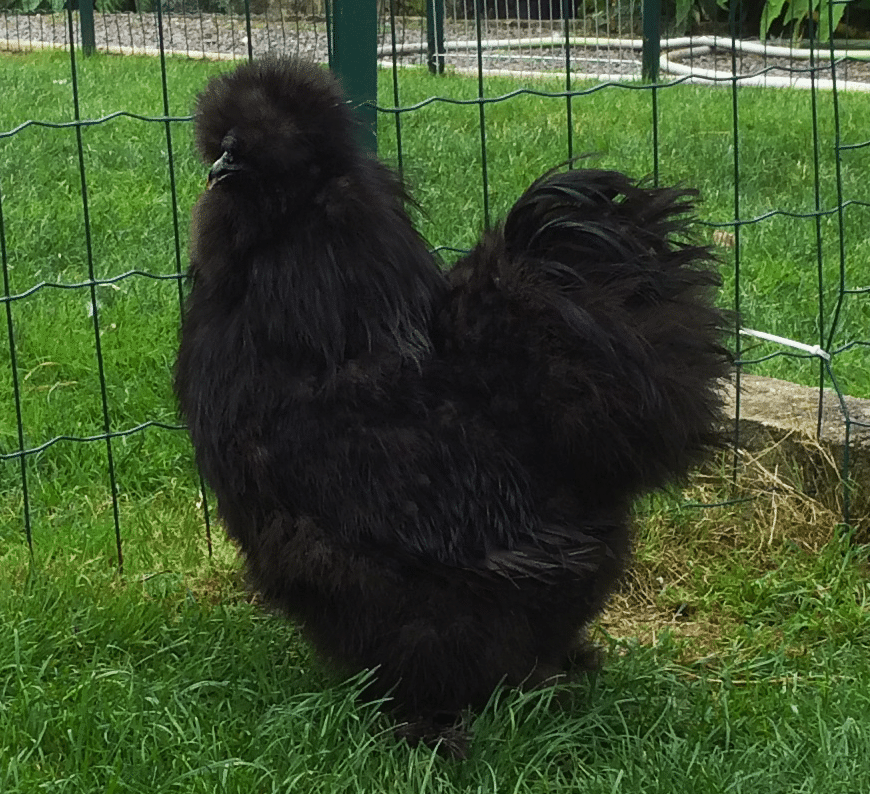
- Purpose: Ornamental
- Average Weight: 4 lbs
- Egg Production: 100 per year
Silkies are adorable chickens that are some of the most popular ornamental and show birds. While regular-sized Silkies are available for purchase elsewhere in the world, in the United States you can only purchase the bantam variety of this breed.
Silkies are covered in fluffy black plumage. They have a unique feather pattern that allows their feathers to poof out instead of lying flat on their bodies. While there are many colors of Silkies available, the black color is one of the most popular. They also have black skin and black bones. They have five toes instead of just four, and even their meat is a darker greyish-blue color. In fact, the meat of Silkies is believed to have medicinal qualities and is viewed as a delicacy in many places.
Silkies are small and fluffy, serving as an excellent pet for many chicken keepers. Some owners even report bringing them inside the house! Silkies have calm, friendly demeanors and while they are mediocre layers, they are excellent mothers. In fact, they have been bred for this trait in particular, with Silkies often used to “foster” eggs because they have such a tendency to become broody.
Keep in mind that if you plan on raising a Silkie chicken, you will need to make sure you provide it with outstanding living conditions. Because these chickens are fully feathered, with even their feet covered in feathers, they can easily develop problems when their feet get wet. They are very chatty and make an excellent choice of pet.
6. Sumatra
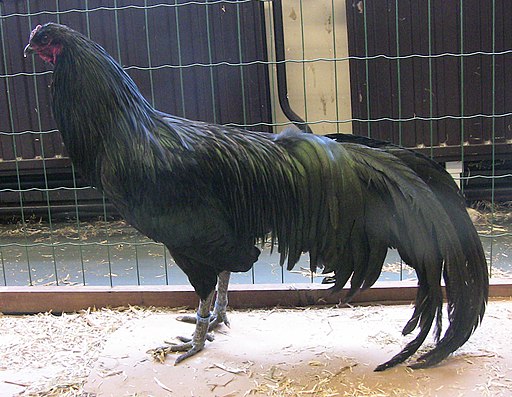
- Purpose: Ornamental
- Average Weight: 4 lbs
- Egg Production: 100 per year
Sumatra chickens are native to Sumatra in Indonesia, but can also be found in Borneo and Java. These chickens actually come in several different colors, but the most popular is black. The black chicken variety of the Sumatra chicken has glossy black plumage that covers its entire body. This plumage ends in a gorgeous display of tail feathers that looks not unlike a waterfall. In addition to black plumage, this bird also has black skin and bones.
The wattles, comb, and face of this chicken are a deep red color. A very rare breed, these chickens were once bred as fighting cocks. As you can imagine, they are known for being friendly birds and are instead quite aggressive. They won’t get along with other members of your flock or livestock and are not a great choice of bird to keep around if you have small children, either.
Sumatra chickens have long, flowing tails and have excellent flying capabilities. Making them a very predator-resistant chicken, this trait requires you to also have an exceptionally tall fence to keep them confined.
However, Sumatra chickens make excellent ornamental and show birds. They are poor layers, producing just one medium-white egg per week. They are also poor meat birds, producing tough, gamey meat. They are also quite small, with the largest males only growing to three or four pounds.
7. Langshan
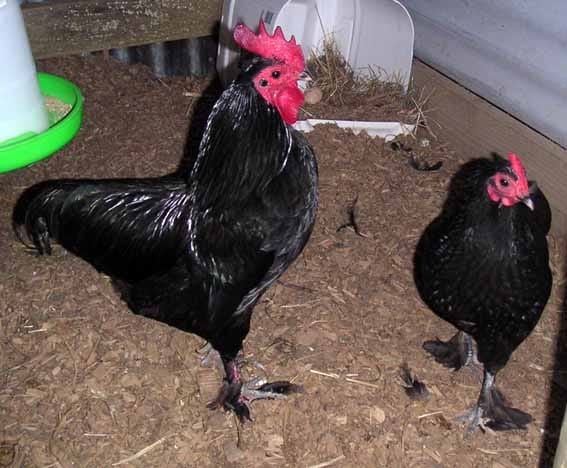
- Purpose: Dual-purpose
- Average Weight: 7-10 lbs
- Egg Production: 180 per year
Langshan chickens, particularly Black Langshans, are endangered chickens that can be quite difficult to find. They have feathered legs with plumage that stops just before the toes. As a result, they look like they are wearing leg warmers! These chickens are calm and graceful, making them a good choice for a mixed flock.
Originally from China, the Langshan breed is named after a district along the Yangtze Kiang River. Unfortunately, it is difficult to purchase Langshan chickens, as most poultry distributors do not sell these chickens. You can find them at hatcheries that specialize in rare or heritage breeds of chickens.
Langshan chickens can be introduced to just about any flock because they are large and relatively docile. They have bright, intelligent eyes and are independent as well as friendly.
Langsham birds are dual-purpose, meaning you can raise them for meat or eggs. They produce a satisfactory amount of decent-tasting meat as well as plenty of medium-sized brown eggs each week. These eggs are in a shade of dark brown that is one of the darkest you will find.
8. Jersey Giant

- Purpose: Meat production
- Average Weight: 11-15 lbs
- Egg Production: 150-200 per year
As the name implies, the Jersey Giant is the boss of the barnyard flocks. That said, they are also quite docile. Jersey Giants originated in the United States as a meat bird and an alternative to turkeys. They are the largest purebred chicken breed you will find.
These gentle, easygoing breeds are one of the largest breeds of chicken, meaning you will need to provide them with a slightly larger run and coop. Otherwise, they are easy to keep, making fantastic pets and egg producers.
Jersey Giants lay around 150 extra-large brown eggs each year. They also make good meat birds. These chickens do not mind cold weather, using their ample body fat to stay warm, but don’t do well in the heat. However, they can live in semi-confinement without any issues.
While these birds are large, weighing up to fifteen pounds, remember that your hens won’t weigh as much as the roosters. That being said, their even temperament and ability to withstand cold temperatures makes them a good choice for your backyard flock.
9. Swedish Black

- Purpose: Egg production
- Average Weight: 5-7 lbs
- Egg Production: 150 per year
As you might guess, Swedish Black chickens are all-black birds that are similar to the Ayam Cemani in their coloration. These chickens are all-black, possessing the same genetic mutation as the Ayam Cemani in that their bones, feathers, and skin are completely black. Even their tongues are black. However, Swedish Black chickens are much smaller than Ayam Cemanis, and they are also even more difficult to find.
Despite this, Swedish Black chickens are excellent egg layers, possessing a more docile temperament than the Ayam Cemani. They are also quite a bit more friendly, adapting to the role of domestic chicken with more grace than their Indonesian counterparts. Swedish Black birds are calm and will produce about 150 cream-colored eggs each year.
10. La Fleche
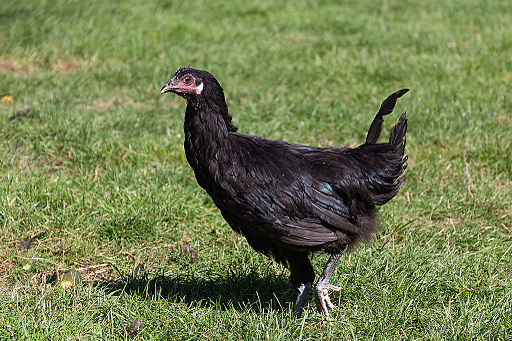
- Purpose: Dual purpose
- Average Weight: 6.5 lbs
- Egg Production: 200
This unusual chicken breed is an unusual choice for the poultry yard, but nevertheless, one that you will not regret making. La Fleche is named after ht won in which originated, La Fleche in Paris, France. This breed originated near the 15th century and has a bizarre appearance that has led it to be called the Devil’s bird.
This chicken is all black but also has a comb that looks like two horns. The bird is a heritage breed that is listed as critically endangered. It is growing in popularity, largely because it produces meat with an outstanding taste. Unfortunately, it is a slow-growing chicken breed, taking about ten months for this chicken to reach full growth. Hens weigh around 6.5 lbs.
These birds are dual-purpose, raised for both meat and eggs. Also kept as an ornamental bird, this chicken does well in confinement. However, it can be a bit wild and is difficult to tame. It does well in the heat but does not like living in cold environments.
Why are Some Species of Chickens Completely Black?
There are several reasons as to why you might find a black chicken. Most have to do with the genetic pigmentation of a breed.
While most of these chickens are only black on the outside, with luxurious black plumage that gives them a gorgeous outward appearance, there are other chickens that are entirely black, from their feet to their faces – and even their innards.
Fibromelanosis is a mutation in domestic chickens that expresses itself as an abnormal accumulation of melanin in the tissues of a chicken.
This can be demonstrated in every organ and tissue of the chicken, from the tongue to the eyes and even the heart, but most chickens will have only some black pigmentation.
There are also some black chicken breeds that are naturally melanistic.
This means that due to genetic variations, they have more pigment production in their skin or feathers.
You might notice this in one individual member of your flock or in a group bred from the same parents.
Advantages of Raising Black Chicken Breeds
If you are considering raising black chicken, consider the following advantages. You’ll be won over in no time!
- They are gorgeous. They offer a unique plumage that will attract you to them immediately. They also really stand out in a barnyard flock and add an element of interest.
- You can show them. If you are interested in raising chickens to be displayed at poultry shows or other events, black birds are the way to go. They are incredibly unique and most black chicken breeds are also recognized as ornamental species.
- The meat may be better for you. Some – certainly not all – breeds of black chicken, like the Silkie, possess meat that is also black. This meat is believed to be better for you, containing higher levels of a certain antioxidant known as carnosine. However, if you’re going to raise chickens for meat, make sure you’re comfortable with butchering chickens.
- They offer all the other advantages of raising chickens. Black chickens are not unlike all other breeds of chicken in that they can be raised for meat, eggs, or show purposes – it all depends on the specific breed. If you want an all-black chicken breed, you can find a breed that will meet your specific requirements for temperament, production, and everything else.
Challenges of Raising Black Chicken Breeds
While there are several distinct advantages to raising black chickens, there are also some challenges and potential drawbacks you will need to be aware of.
While most are not at all a reason to not raise these birds, you should consider these factors before adding a black chicken to your flock.
- They can be hard to find. Many all-black chicken breeds, like Ayam Cemanis, are extremely difficult to purchase from local hatcheries. Some areas have restrictions on purchasing these breeds, as they are considered exotic and subjected to certain laws. They can also be extremely expensive and there is a lot of hatchery fraud that occurs in breeders attempting to sell hybrid “knock-offs” for exorbitant rates.
- They can be finicky. It can be difficult to raise an all-black chicken in some areas of the world. Because of the color’s inability to reflect sunlight back, black chickens often hold heat more readily than their white counterparts. That being said, there are also countless black chicken breeds you can raise, like Minorcas, that are well-adapted to warm weather.
- You are selecting them only for color. Be wary of selecting a chicken breed for its appearance alone. If you are raising a chicken as a pet, you should never choose one based on just how it looks. Consider its temperament and care requirements before you invest in a black chicken, because it would be terrible to purchase a chicken for its looks and then have to get rid of it because it is aggressive or otherwise ill-suited for your flock or lifestyle.
Where Can I Buy a Black Chicken Breed?
You can find a black chicken anywhere you would purchase other colors of chickens.
They are usually available on hatchery sites as well as from private sellers.
Keep in mind that rare or exotic breeds will be more difficult to find, meaning they will also likely be more expensive.
However, common breeds of black chickens, such as Orpingtons or Australorps, are generally no more expensive than other colors or breeds of chickens.
Therefore, you should have no trouble finding or financing your purchase of these beautiful birds.
Frequently Asked Questions
Black chicken breeds are uncommon, but they’re desired for their gorgeous appearances. If you’re considering keeping some of these breeds, here are the answers to some commonly asked questions.
What Does a Black Chicken Taste Like?
Some black chickens have black or blueish-gray meat, but it doesn’t taste much different than regular chicken meat. How chickens were raised affects the taste of the meat way more than the color. Some people believe that black chicken meat is better for you, but it’s unclear if that’s always true.
How Rare is a Black Chicken?
It depends on the chicken breed. Some black chicken breeds like the Ayam Cemani and Sumatra are rare. Yet, black variants of common breeds are possible. So, you don’t have to break the bank if you just want a chicken with black feathers, but it might be difficult to find one of the rare breeds.
Will a Black Chicken Lay Black Eggs?
No chickens lay black eggs. Even if a hen has the darkest pigment possible, their eggs won’t reflect that even though the chicks might. Dark brown is the darkest color a chicken egg can be, so if you see a picture of a black egg, it’s not a chicken egg.
Are These Chickens Right for Me?
If you want to add a new aesthetic appeal to your backyard flock of chickens, consider adding a breed of black chicken.
These creatures are absolutely gorgeous, offering a sophisticated feel to any group of birds.
While they can be admittedly tough to find, they are no more difficult to care for than any other breed of chicken.
There are plenty of other black chicken breeds to be aware of, but these are some of the most popular.
Add one of these ten awesome types of black chickens to your flock today, and let us know if there are any other standouts that we missed.
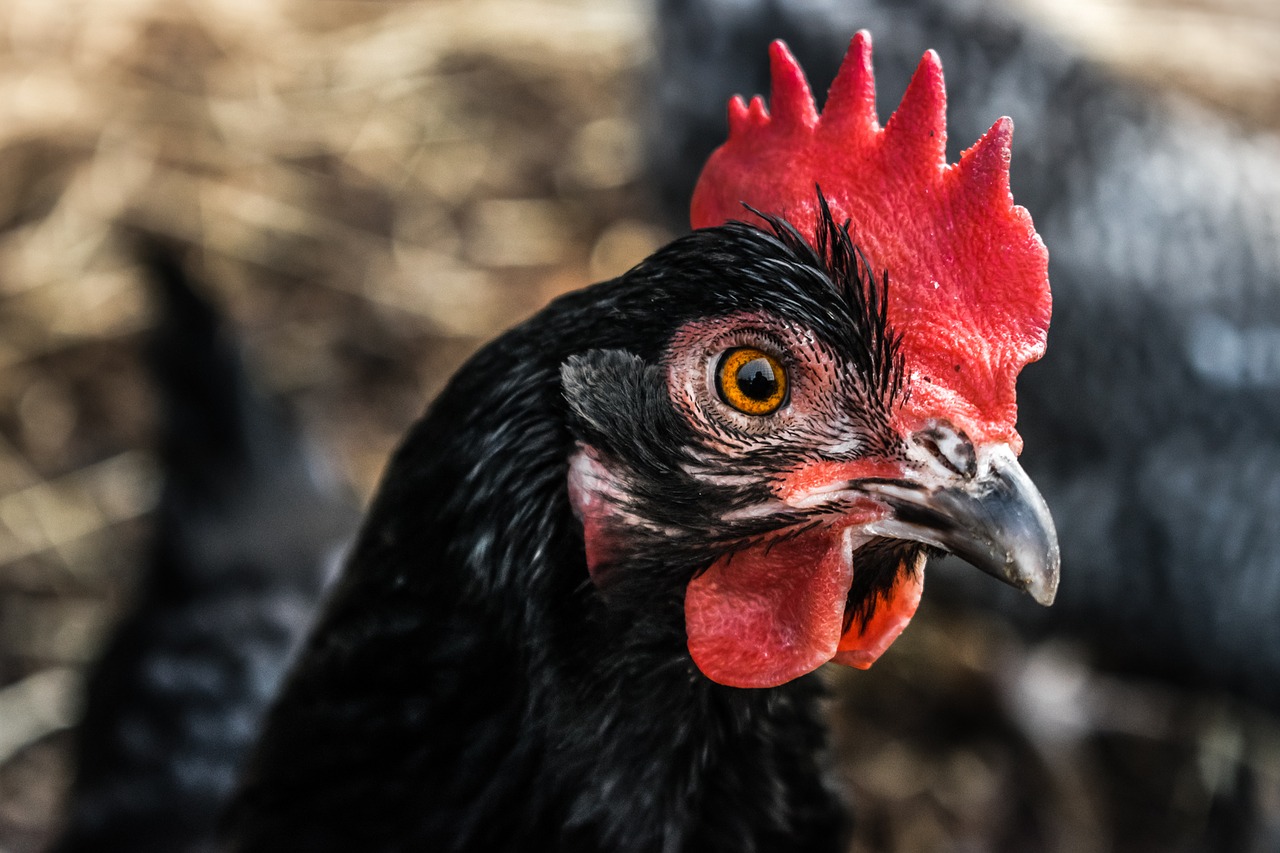
I ended up with one black chicken from 3 that hatched. not sure if it is a boy or girl. she is beautiful. we are watching he/ she every day to see what he/she might be. is this a rare thing that happens. daddy is black and silver and mommy is all red.